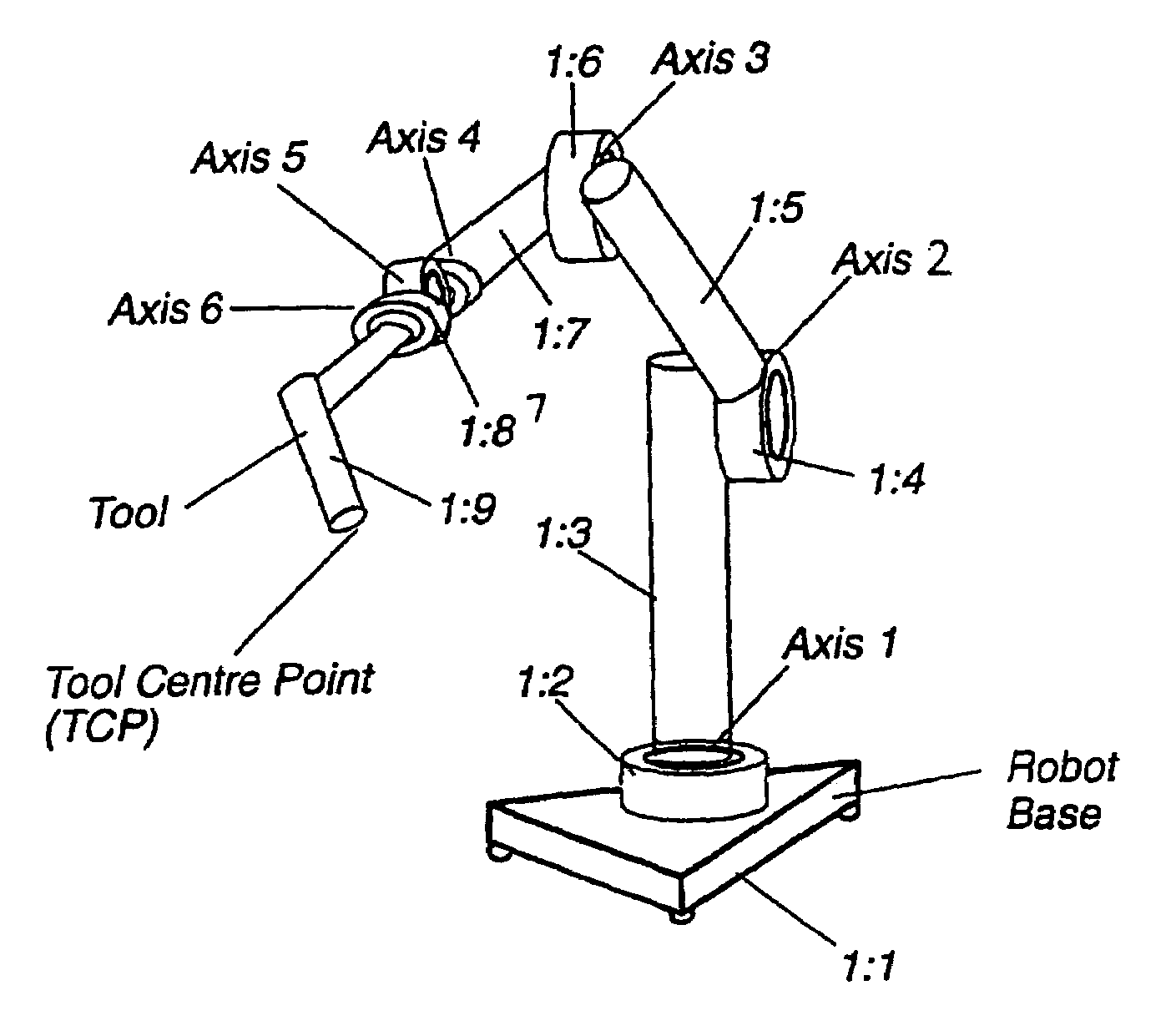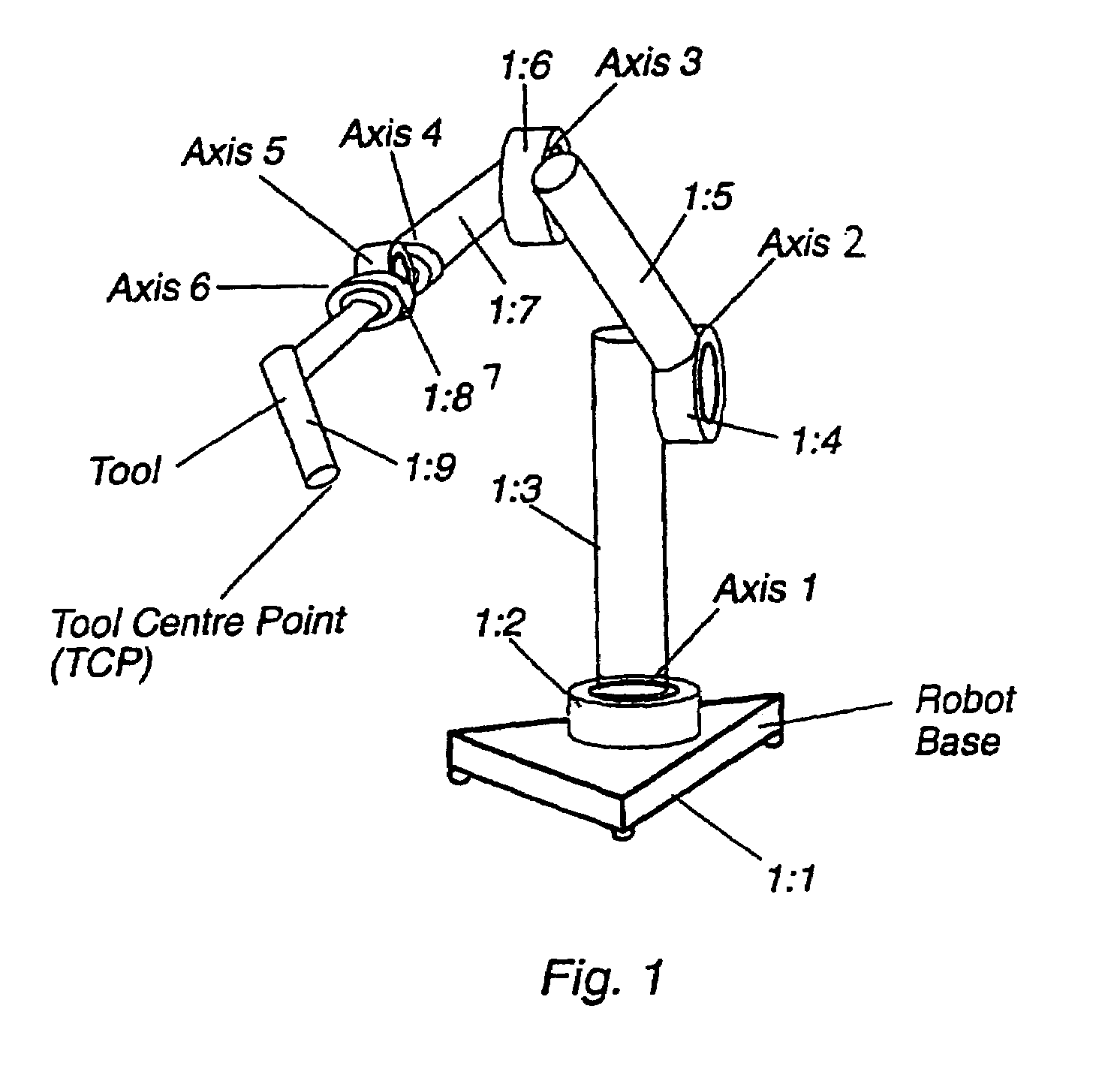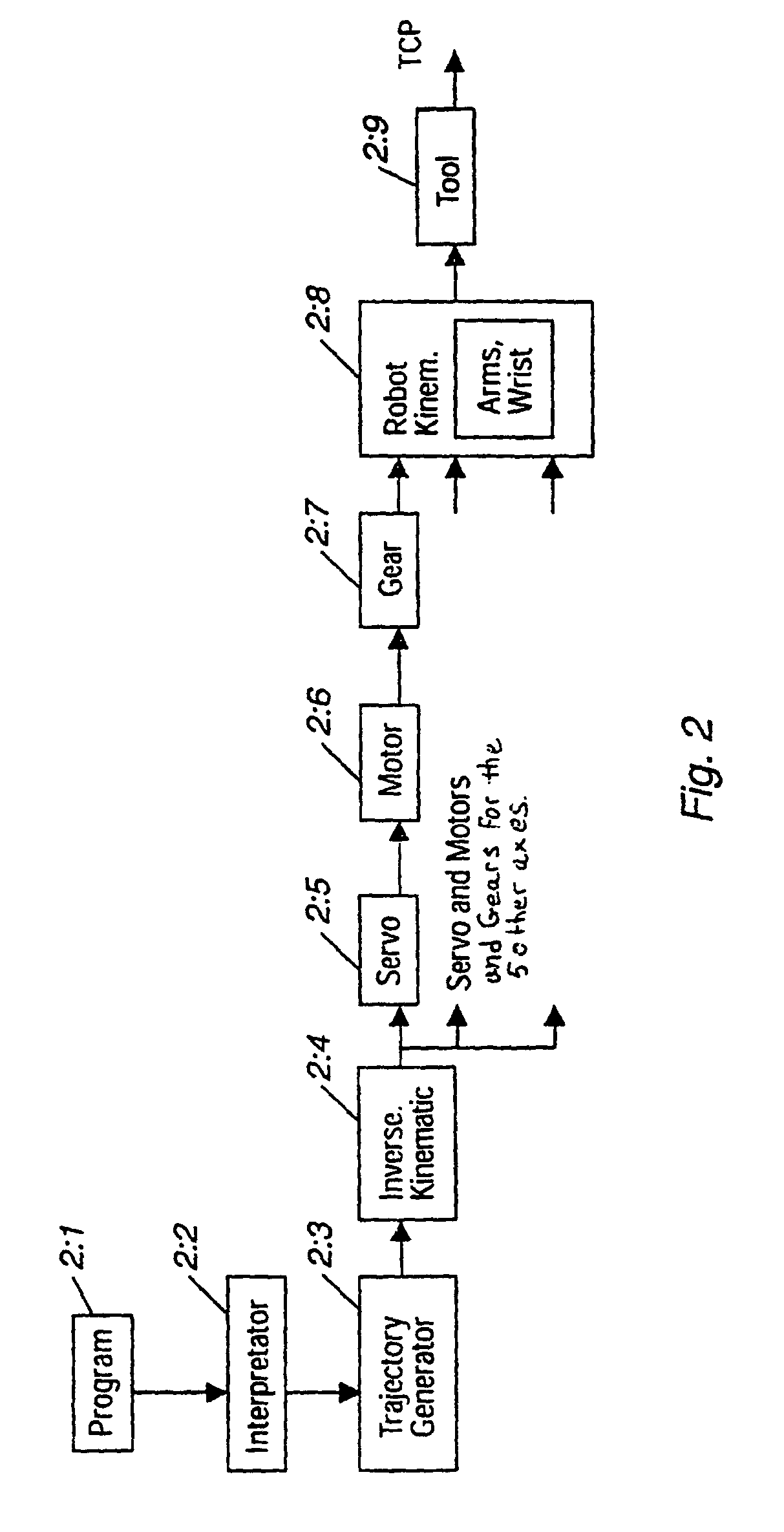Pathcorrection for an industrial robot
a robot and path correction technology, applied in the field of industrial robots, can solve the problems of large number of error sources of industrial robots, difficult control of motors, and high accuracy requirements, and achieve the effects of accurate measurement of reference points, increased accuracy of robot movements, and improved accuracy
- Summary
- Abstract
- Description
- Claims
- Application Information
AI Technical Summary
Benefits of technology
Problems solved by technology
Method used
Image
Examples
Embodiment Construction
[0047]A method for compensation of dynamic broadband error sources according to the invention is shown in FIG. 3, which is an extension of FIG. 2. In FIG. 3 the blocks representing servos 2:5, motors 2:6 and gears 2:7 are shown for all the axes of a 6-axis robot. In the case where the invention is used for other types of manipulators, for example position adjusters having two or three axes, the invention is used for a smaller number of axes, or in the case of coordinated running between the robot and an external manipulator, the invention is used for the axes of both the robot and the manipulator at the same time. From each servo, an arrow extends to the corresponding motor representing the motor torque controlled by the servo, and from each motor a feedback extends to the corresponding servo, representing the measured signal from the axis-angle measuring device of the motor. A module for direct-kinematics calculation 3:1 receives signals from the axis-angle measuring device of the ...
PUM
| Property | Measurement | Unit |
|---|---|---|
| Shape | aaaaa | aaaaa |
Abstract
Description
Claims
Application Information
 Login to View More
Login to View More - R&D
- Intellectual Property
- Life Sciences
- Materials
- Tech Scout
- Unparalleled Data Quality
- Higher Quality Content
- 60% Fewer Hallucinations
Browse by: Latest US Patents, China's latest patents, Technical Efficacy Thesaurus, Application Domain, Technology Topic, Popular Technical Reports.
© 2025 PatSnap. All rights reserved.Legal|Privacy policy|Modern Slavery Act Transparency Statement|Sitemap|About US| Contact US: help@patsnap.com



